#georgian traditional dance
Explore tagged Tumblr posts
Text
Georgian Warrior

My another fanart of the most beautiful movie: And Then We Danced / და ჩვენ ვიცეკვეთ (2019) dir. Levan Akin
Help, I accidentally made a sociorealistic propaganda poster!😆 I really just wanted to make a picture to pair with Heracles but then things has gotten out of hand🤣
It felt a lot like drawing the same thing twice (a lot like drawing Merab The Rooster again). Also it always itches my ego to draw something that's already been captured in the movie... But there's actually not a single movie scene showing Merab's whole posture right after his final dance! This camera angle is just my own and nobody can take it away from me!🥰
Picture was inspired with the style of my favorite polish illustrator, Jan Marcin Szancer. Now every anatomical mistake you can blame on the stylization, lol, I'm brilliant💪
#my art#my fanart#my atwd fanart#and then we danced#atwd#და ჩვენ ვიცეკვეთ#levan akin#levan gelbakhiani#ლევან გელბახიანი#georgian movie#georgian culture#chokha#jan marcin szancer#a potem tańczyliśmy#atwd fanart#merab lominadze#merab x irakli#georgian dancer#georgian traditional dance#illustration
32 notes
·
View notes
Text

Samaia dance

555 notes
·
View notes
Text
Georgian traditional clothing

The Roots series. Traditional clothing by Gela Mikava
Traditional lifestyles developed around the local climate and terrain, which in turn precipitated the creation of conventional clothing. Although every region of Georgia possessed its own distinct attire, an overarching similarity was seen in the chokha (Russian: cherkeska), a wool coat typically worn by men and noted for the cartridge holders sewn onto the chest. Women’s clothing was much more varied between the regions, particularly in the remote mountain communities.
Prince Vakhushti Batonishvili (1696–1757) paved the way in the study of traditional Georgian clothing, giving particular attention to the attire from medieval times and that of his own generation. Foreign travelers such as Arcangelo Lamberti and Jean Chardin also made notable contributions to the topic. The latter travelled to Georgia in the 1670s, and his remarkably detailed notes provide valuable insights into local clothing of that time as well as the similarities and differences between Persian, Georgian and European attire.
Thanks to these and other such historical records, a picture of traditional Georgian clothing from each region of the country may be pieced together today.
Traditional Clothing of Kartli-Kakheti
According to Vakhushti Batonishvili, people from Kakheti and Kartli had similar clothing styles. For men in Kartli-Kakheti, the primary piece of apparel was the chokha. The Kartli-Kakheti chokha was longer than that of neighboring Khevsureti and had a triangular opening at the neck to reveal an inner cloth. The chokha, worn without a belt by men, included a slitted skirt and miniature pockets on either side of the chest that were traditionally loaded with bullets. The Kartli-Kakheti chokha was usually tan, blue, black or red in color.
In keeping with conservative Georgian culture at that time, women in Kartli-Kakheti wore long dresses with beautiful ornate bodices. The dress was tightened at the waist with a richly decorated belt that draped almost to the end of the skirt. The most important aspect of the outfit was the headdress, which was defined by a triangular white veil of tulle, a velvet rim and a dark headscarf.
Traditional Clothing of Pshav-Khevsureti
Clothing in Georgia’s mountain regions was made of a durable wool fabric that provided protection against harsh alpine conditions. Despite its practical nature, the apparel was always beautifully decorated, as women in Pshav-Kvevsureti were trained from childhood in wool processing and dyeing.
Kvevsureti’s chokha, known as talavari, were short with slits running down to the waist and a beautifully decorated fabric affixed to the front. Men’s outfits typically consisted of knitted pants called pachichebi, woven fiber shoes known as tatebi and chokha with colorful religious symbols embroidered on the front.
Traditional women’s dresses in Khevsureti were called sadiatso. Sadiatso were knee-length dresses decorated with baubles and sophisticated geometric patchwork. Just like their Kartli-Kakhetian neighbors, women in Khevsureti wore a headdress. Traditional Khevsur headdresses were greatly admired and decorated with cross-shaped ornamental patterns. Pshav and Khevsur women would also wear silver coins and cross necklaces.
Traditional Clothing of Tusheti
Tusheti’s highland inhabitants were known for their use of wool in making clothes, shoes and rugs, with solar symbols and crosses regularly employed in their remarkable clothing and jewelry designs.
Both women and men in Tusheti wore colorfully knitted shoes called chitebi. Men’s chitebi were plainer with polka dots, while women’s chitebi were striped and multicolored. When making chitebi, the weaver would start from the tip of the shoe and continue backwards towards the heel. Chitebi shoes also played a role in local superstition: On a Wednesday during Lent, mothers would put male chitebi under the pillow of their daughters right before they went to sleep, in the hope that they would see their future husband in their dreams.
Traditionally, a Tushetian woman wore a black headscarf which reached down to her knees, a loose-fitting dress underneath her robe and an outer garment adorned with jewelry across the chest. Men’s clothing consisted of a chokha and a warm black hat.
Traditional Clothing of Svaneti
No discussion of Georgian traditional clothing would be complete without mentioning Svaneti’s famous hats. Svan hats were usually gray with black seams. Each hat was made from 200 grams of sheep’s’ wool and took about 30 hours to complete. The black seams were cross-shaped and reflected the popular Svan greeting , “May the cross protect you”. Svan hats were valued for providing warmth from winter’s chill and respite from summer heat.
Traditional Svan clothing consisted of a shirt, chokha, trousers and Svan hat. Women wore a woolen dress and headdress adorned with earrings and jewelry, while those who were wealthy also wore silk shirts and a velvet cloak.
Traditional Clothing of Racha
Iakob Gogebashvili, a leading 19th-century Georgian pedagogue, described female outfits from Racha in one of his writings, noting that they wore the chokha and an akhalukhi undershirt.
Women’s clothing from Racha also attracted the attention of many foreign travelers. In 1874, German scientist Dr. W. B. Pfaff could not hide his astonishment towards women’s clothing in Racha, exclaiming “I was amazed by the variety of women’s clothing, which in many ways reminds me of Anatolia”. In 1874, English explorer Philip Grove, upon seeing three local women, also noted “They wore short dresses and trousers…with grace”.
Apparently men’s attire in Racha was less noteworthy, as little information has reached us today regarding their traditional style of dress.
Traditional Clothing of Adjara and Guria
Traditional Georgian men’s clothing in the western Adjara and Guria provinces differed dramatically from that of eastern Georgia. The typical men’s outfit in Guria-Adjara, Samegrelo and the whole of southwest Georgia was the chakura, which consisted of a short waist-length chokha, wide-brimmed trousers and a colorful silk belt.
Throughout the ages, women in Adjara have worn three types of dresses. Zubun-faraga, the oldest of the three, derived its name from the Turkish word zubuni, meaning “coat”. The dress was long and hemmed in at the waist, with special attention paid to lavish embellishments on the bodice. A zubun-faraga dress can be seen today on display at the Simon Janashia Museum in Tbilisi.
The zubun-faraga dress was gradually replaced by the datexili dress, which was recognizable by its long, wrinkled appearance and multicolored threads worked into the fabric. It was tightly fitted to the body and had hidden pockets sewn into the wrinkles. In later years, the datexili dress evolved into a new variation known as the forka dress.
Traditional Georgian Shoes
Traditional Georgian shoes were typically made using muted colors of black, red, green and light brown. The 17th-18th century Georgian diplomat Sulkhan-Saba Orbeliani mentions several types of local shoes in his writings:
Tsugha were worn at home by both men and women. They were sewn from leather of various colors and the edges beautifully decorated.
Kalamani were common leather shoes worn by villagers beginning in the 10th-11th centuries.
Mogvi were tall leather boots worn by kings and nobles.
Additional Information
The best places to see Georgian traditional clothing today are at the Art Palace of Georgia (formerly known as the Museum of Cultural History) and at the Simon Janashia Museum, both located in Tbilisi. Traditional clothing, which has slowly been making a comeback in the 21st century, is also sometimes donned at Georgian traditional weddings and cultural events.
The Day of National Dress in Georgia is a recently established holiday celebrated on the 18th of May. In commemoration of their heritage, Georgian dancers and ordinary people alike dress in national costumes and march across the city to demonstrate the beauty of traditional Georgian attire. If you are visiting Georgia during this time, be sure to join the celebration to become familiar with diverse costumes from every region of Georgia!
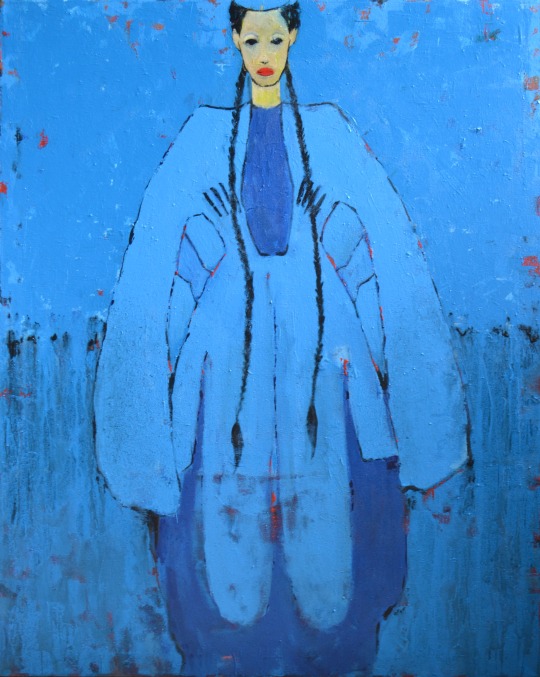
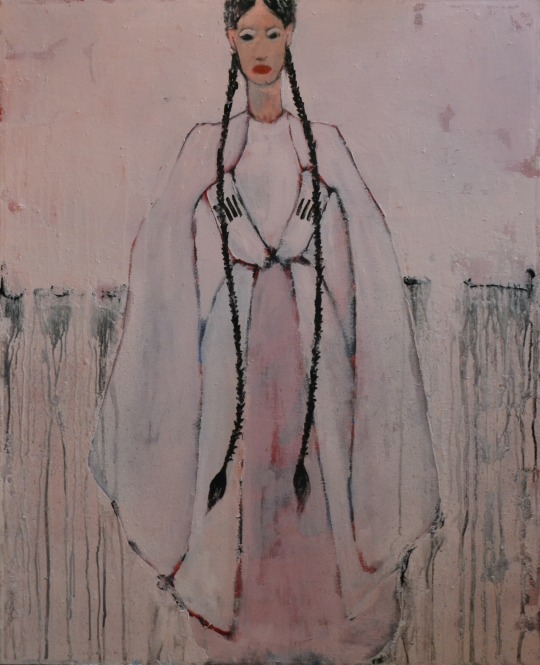


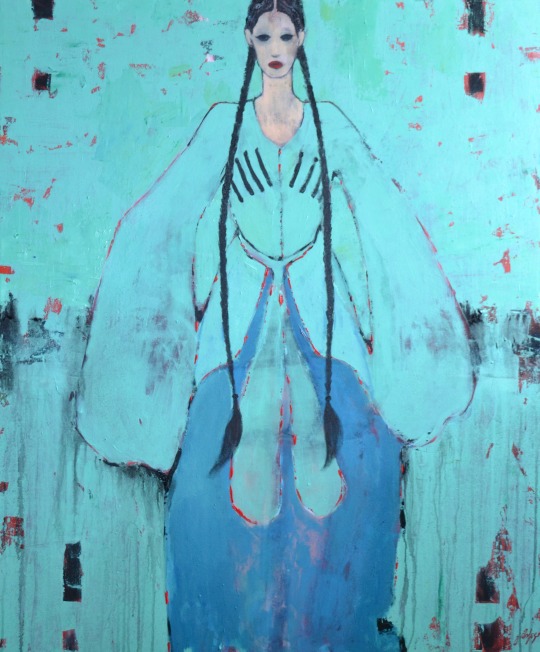
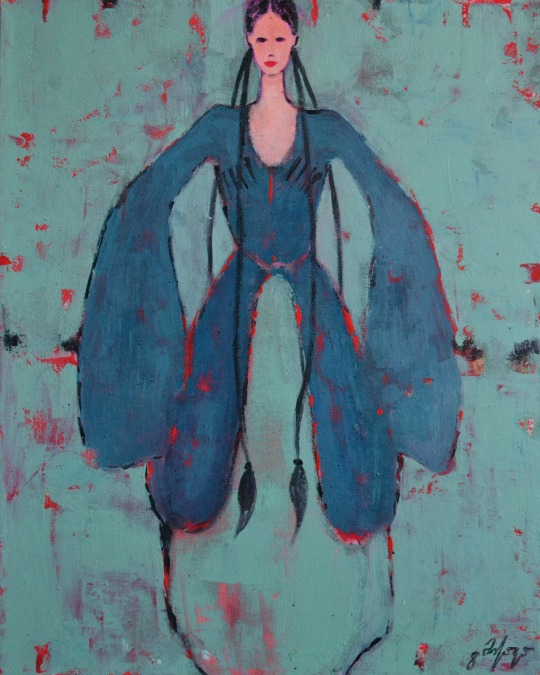

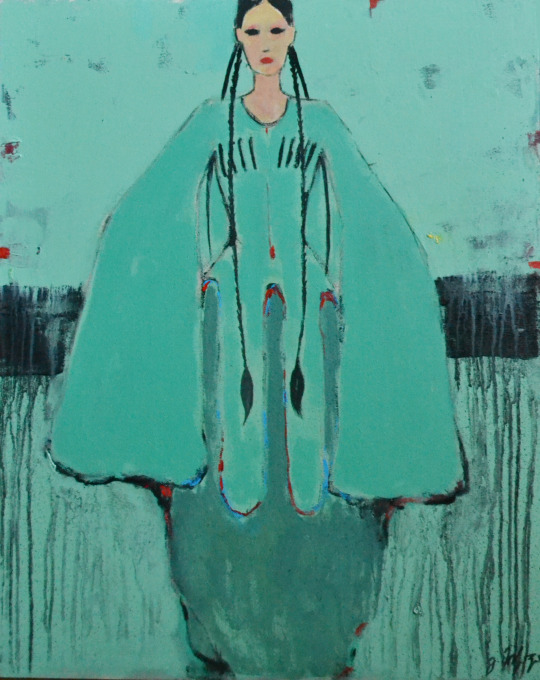
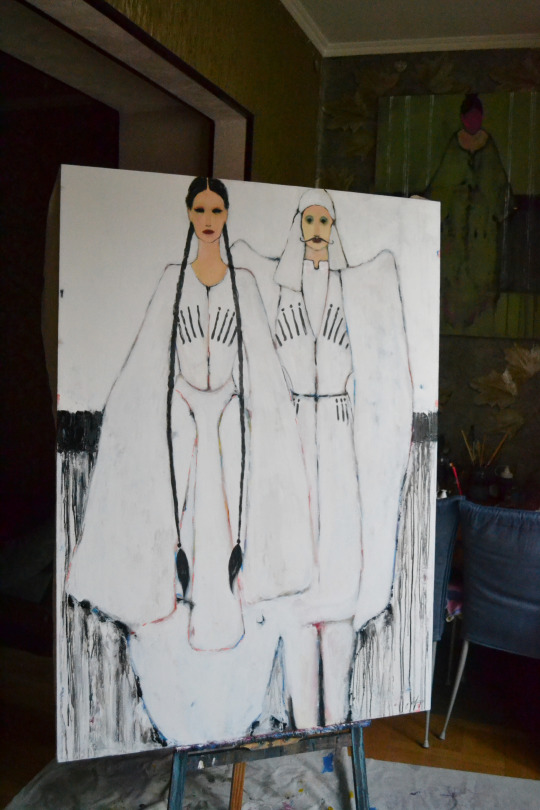
3 notes
·
View notes
Text
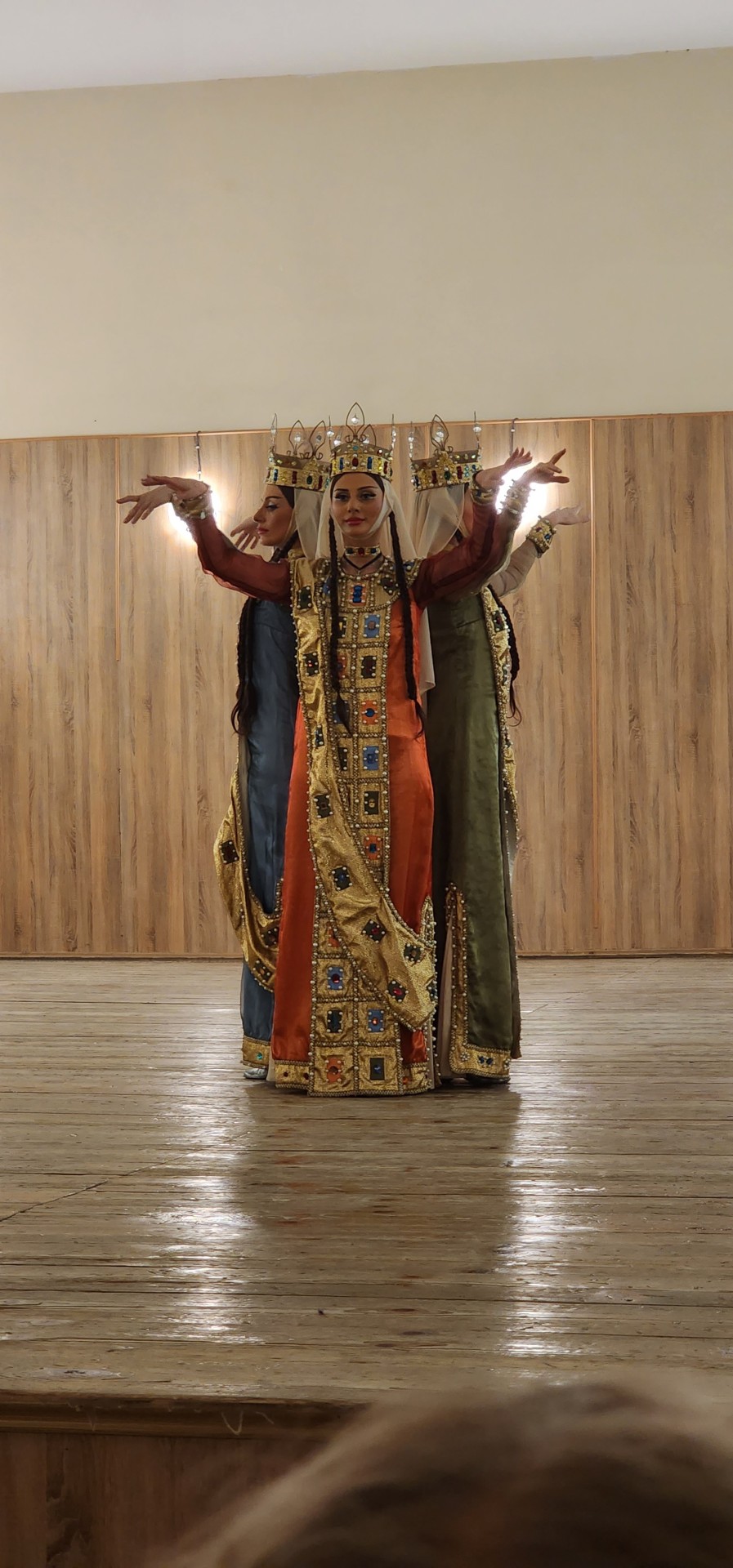
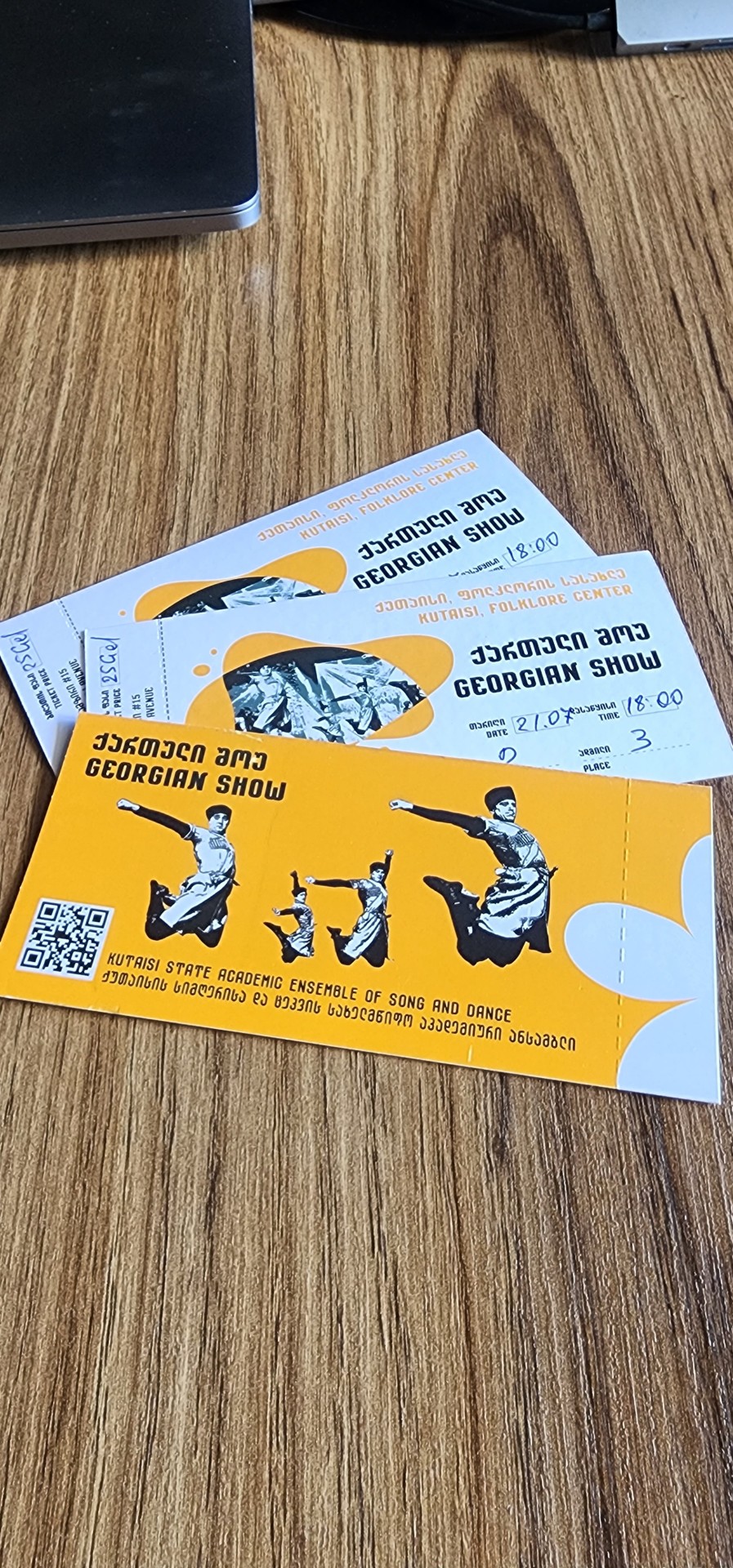
3 notes
·
View notes
Text

Persian Miku!?
In traditional Mazani clothing from persia!
More info⬇️⬇️
Mazandaran province is one of the 31 provinces of Iran. Its capital is the city of Sari . Located along the southern coast of the Caspian Sea and in the adjacent Central Alborz mountain range.Mazandaran is a major producer of farmed fish, and aquaculture provides an important economic addition to traditional dominance of agriculture. Another important contributor to the economy is the tourism industry, as people from all of Iran enjoy visiting the area.
Language: The population is overwhelmingly Mazandarani, with a minority of Gilaks, Azerbaijanis, Kurds, Georgians, Armenians, Circassians, Turkmen and others, Mazandarani people have a background in Tabari ethnicity and speak Mazandarni.
Culture( literature) : In the Persian epic, Shahnameh, Mazandaran is mentioned in two different sections. The first mention is implicit, when Fereydun sets its capital in a city called Tamishe near Amol:
بیاراست گیتی بسان بهشت.................... به جای گیا سرو گلبن بکشت
از آمل گذر سوی تمیشه کرد .............. نشست اندر آن نامور بیشه کرد
And when Manuchehr is returning to Fereydun's capital, Tamisheh in Mazandaran (known as Tabarestan), after his victory over Salm and Tur.
Arash the Archer is a heroic archer-figure of Iranian mythology. According to Iranian folklore, the boundary between Iran and Turan was set by an arrow launched by Arash, after he put his own life in the arrow's launch. The arrow was traveling for days before finally landing on the other side of the Oxus on the bark of a walnut tree hundreds of miles away from the original launch site atop a mountain
Music and dance:
Music in this region relates to the lifestyle of the inhabitants, and the melodies revolve around issues such as the forests, cultivation or farming activities and herding. The most famous dance of this area is the Shomali dance, not forgetting the stick dance that the men perform. Popular music in the province, known as the Taleb and Zohre, Amiri Khani and Katuli.
Cuisine :
The cuisine of the province is very rich in seafood due to its location by the Caspian Sea, and rice is present in virtually every meal. Mazandarani cuisine is diverse between regions; the cuisine of coastal regions is different from mountainous regions, as people in the Alborz usually use the indigenous herbs and coastal people use the dishes of fish and Caspian Mazandaran rice with vegetables.
#art#design#anime#fashion#fanart#miku#hatsune miku#vocaloid miku#miku fanart#persian#ancient persia#mazani clothing#twitter#artists on tumblr#my art#illustration#vocaloid#traditional clothing#traditional costume#miku challenge#international miku
2K notes
·
View notes
Text
some more horse guy fashions, specifically historical

erased the mandolin for this one goodbye mandolin i couldn't be bothered drawing you
so my thought process for this is like what would a society of, lbr, british ppl who are horses value and how would that translate into what they wear if they specifically don't have a taboo against nudity. these fashions are pre-florian conversion (florian was the guy who gave them all government-mandated shame) and considered traditional (the full coverage dresses are also traditional but to a post-florian period so those would be called like. idk. classical). they were still in use in the enclaves north of ironwall for quite a while. anyway returning to the point, the answer to 'what they value' is movement. in actual horses, herd hierarchy and social function is based off movement - free movement for animals for whom the flight response is so strong is an incredibly important thing. dominance in horses is expressed and reinforced by controlling and curtailing the movement of subordinates. for these people, free movement was enhanced by kinetic fashion - free-flowing garments like capes, loosely-pinned headgear with feathers and floaty cloth, and noise-generating devices like bells and chimes were all used to elaborate and enhance the appearance of somebody's gait. the overall look was mostly based off of morris dancers (pheasant feathers, bells on the legs, handkerchiefs) because i like the tie-in to suppression of folk dance by puritans. i think these guys would have some great folk dances
in much the same way trainers are just normal everyday footwear now, game kerchiefs/flags were worn in non-sports contexts because it suffused into the mainstream and became Cool. the flags were used in a game similar to tag rugby if you've ever seen that played (where snatching people's flags is used instead of full contact tackling, forcing someone who's been 'tagged' to stand still until the flags are returned). as i said before somewhere, centaur team sports go incredibly hard.
the tail ornaments were status symbols and in appearance a bit like the traditional show turnout of shire horses. woven grass and straw could be used for a temporary ornament like these, but metal or carved wood were really impressive, and very common gifts of favour between romantic partners. more flags could be hung there if you wanted to be really cool
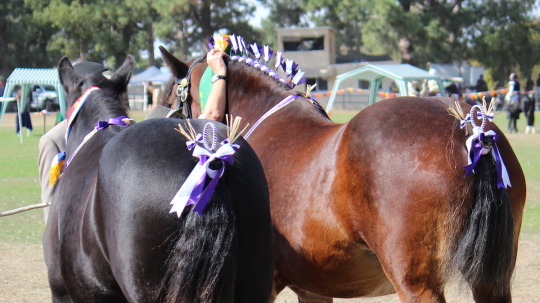
variations of this style of mane décor were also employed (they loved their ribbons)

in the same time period, Ironwall fashion was a little bit different. These expensive caparisons were usually purchased secondhand after a real horse was done wearing them, with distinct front and back halves of different length. The garments would usually have the original liveries removed and replaced by generic religious iconography as few centaurs would ever have their own heraldry. Later, in the Georgian and Victorian eras, full coverage to the pasterns with a single undergarment was the only acceptable option (that's the classical style now) The rest of the picture is self-evident, but centaurs at the time wore additional... equipment on the withers which were called a variety of very colourful names but mostly referred to as gelding bars (as in, they will geld you if you sit on them). they were metal and spiked. these were introduced by the florian government to discourage the grossly inappropriate contact of one person's legs around another. previously there was no great taboo against riding on a centaur's back, it wasn't super common but nobody was like "this is basically public sex" until our pal centaur cromwell i mean florian came along and decided this was the work of the devil. young people were also made to wear these to discourage the homosocial behaviour very common to the mid-20s age groups of both sexes, and they also had a place in preventing stallions from wrestling (ironically increasing the danger of their fights because well now all we can do is stand back and kick). the wearing of these devices was mandatory. headcoverings were not strictly necessary, and neither were fully-wrapped tails, but some especially devout citizens took to it quite well.
#long fucking post. well too bad#in case it wasn't like super obvious. the country ironwall is set in is Basically Just Britain#having a blast with placeholder guy. go king. i think this is actually his time period#his proportions are very different to like pascals or whoever because he's only 13hh#ironwall
346 notes
·
View notes
Text
SIR. SIR WHAT ARE YOU DOING IN MY HEAD.
hey god, it’s me again… what the fuck are illyrian leathers
#i also had some georgian stuff on my inspo board for illyria#LOOK AT GEORGIAN TRADITIONAL DANCE VIDEOS AND TELL ME THEY WOULDN'T ABSOLUTELY EAT THAR
39 notes
·
View notes
Text
Dances I think the Noldor would have:
valle (Albania)
traditional Georgian dance except everyone dances the "mens" part
tarantella calabrese
Scottish country dancing
Polka
Dances I think the Sindar would have:
Irish dancing
Waltz
Polka
traditional Greek dancing
21 notes
·
View notes
Note
enlighten more on your georgian retj please dawg
რომეო და ჯულიეტა⁉️⁉️⁉️
One of my favorite most immediate things about RdaJ which kind of inspired the entire thing is Le Bal, which would EASILY be based off the 2010 revival, there’s a Georgian dance called the Khanjluri where the dancers are all dressed in red and throw daggers, and one of the most famous Georgian dance schools has posted a performance of it (clip below) that reminded me of Le Bal
I am also very torn how much Georgian dance I’d hypothetically WANT in RdaJ because typically it’s very strict and rigid and doesn’t allow much fluidity and freedom, at least none that I’ve seen, but Le Bal would definitely include elements of the Khanjluri, and Le Duel would include elements of the Khevsuruli, which kind of encapsulates the entirety of Romeo and Juliet; the dance traditionally starts with a man and a woman flirting, then another man enters and starts a fight with the other, and it descends into battle from there, the fighting ends with a woman (I imagine she would be death in this scenario) entering the stage and throwing her veil.
The gif below is a little clip from a Khevsuruli, and the main issue with it is that it’s super complicated and you have to be really good to do it, obviously in theatre no real swords or shields would be used but the sentiment is certainly there and it’s far more an ensemble thing than it is a main cast thing

When it comes to translating Romeo et Juliette into Georgian it gets difficult because my grasp on Georgian isn’t 100% and Georgian is an inherently clunky language at times, as pretty as it looks (კბილებით = k’bilebit meaning “with teeth” or ტკივილგამაყუჩებელი = t’k’ivilgamayuchebeli meaning “painkillers”) it’s really difficult to work with, I haven’t even been able to find a full translation of Romeo and Juliet in Georgian; also, Georgian slang is really difficult to learn if your grasp on the language isn’t good, which makes it hard to read and translate, along with some words simply not existing in English.
The translation I have that I’m proudest of is for C’est Le Jour, though it’s a bit clunky and should be edited:
“Mourir de jalousie / sidzulvilit davighup’ebi
C'est mourir d'amour aussi / siq’varulis khelit movk’vdebi
Ne me parlez pas d'honneur / tsut’isopeli gardatsvalebamde
C'est par amour que les hommes meurent / chailuris ts’q’als ar davlev”
MEANING:
“I will perish of hatred, (but) I will die by the hand of love. Life unto death*, I will not die and be forgotten**”
* the actual translation is more so something like “The world of a minute (life) changes/twists/turns” as the verb used for “to die” is essentially saying change/twist/turn/shift/etc. and the word for life is translated to “the world of a minute,” it’s just those words that don’t exist in English.
** “chailuris ts’q’als ar davlev” is a regional Georgian phrase so I’m apprehensive about using it but I like the way it sounds better than just having a literal translation, the chailuri is a river in Georgia, where during some ethnic wars in the earlier years of the country, people would be kidnapped and taken across the river, and then they were as good as dead, so it became a phrase, “to drink the water of the chailuri” which means to disappear and be forgotten shortly afterward
Anyways, other little details include:
- Tybalt’s dagger is a Khanjali! I draw him with one anyways
- In my mind, during Verone, the Capulets would be more related to Georgian mountain dances, such as the Kazbeguri
- I would love to bastardize the musical a little bit and include “Shen Khar Venakhi” in Aimer some how
Random costume design inspiration from traditional Georgian theatre that I would love btw









Yap over…… RdaJ please be real please I’ll do anything
9 notes
·
View notes
Text
*wakes up in a cold sweat* andrey stamatin doing georgian traditional dance.
like. look at this and tell me he wouldnt
youtube
9 notes
·
View notes
Text
From djigit_dance on Instagram
2 notes
·
View notes
Text
El Sopo & Friends - Dancing and Partying in Tbilisi
Here are some tidbits from my new ATWD fanfic, which is part of a series but which can be read as an individual story as well. It involves trick-or-treating at Halloween, a party at Sopo's restaurant (El Sopo, the only Tex-Mex eatery in the Caucasus) and some unexpected romantic enhancement for Merab, Mary and Irakli!
A Halloween charity run.
When they were back on the pavement Irakli, Merab and Ninutsa lit cigarettes and checked Sopo’s goodie bag. It was fairly full after dozens of visits at various houses. Most people had given dinner leftovers. ‘The boiled potatoes and the khinkali are all smushed,’ Sopo grumbled. ‘And they gave us gravy, too, without a Tupperware box…Yuck, those chocolates are fucked. It smells revolting.’
Aleko was the treasurer. He counted the pecuniary donations. ‘Five euros, seventeen lari and six hundred Austrian shillings.’ He frowned. ‘Oh damn, those are worthless. The currency was abolished over twenty years ago. But still, people give from the goodness of their hearts and we should all be grateful.’
Sopo flung the bag onto the pavement and trampled on it with her Mexican boots. ‘It’s nothing, bloody nothing!’ she growled. ‘Makes me wonder why I bothered to come along.’
Merab smiled at her. She had recently quit smoking and had been in a continuous state of PMS ever since, as David put it. But she smiled back at Merab. It’s because I’m looking so cute in my old corduroy coat and the tartan cap, he thought.
He had Doggie with him on a leash. She was wearing a pumpkin costume that looked absolutely adorable on her. It had earned her some dog treats from nice people earlier on. It was a pity that Sopo had devoured them. Now that Sopo no longer smoked she had the most outrageous food cravings.
****
Sopo is throwing a costume party dressed as Madame de Pompadour. Pity her friends aren't.
The environment and its first visitors where looking pleasant. David had shaved his upper lip and his chin clean, leaving only hair on his cheeks. He had donned a top hat, a black suit with a white collar and a cloak. Nino was dressed as a chimney sweeper with a cardboard ladder and a brush on a string attached to her jacket. She was a luck charm.
Mary was very Victorian. Her hair was parted and braided into buns over her ears. The plainness of her black dress suggested grateful servitude. Dear Mary. She had graduated with a master diploma from London Uni a few weeks ago, but she had come home for good and she did not like it. Her boyfriend Stanley was still in England. Sopo’s heart ached for her.
The ache turned into ire when Irakli entered the room from the kitchen. He had been working at his (her) pub next door and never bothered to change into fancy dress. In his wake was a yellow something – yes, something.
‘Why are you wearing an Ajax Amsterdam shirt?’ she snapped at him. ‘They plummeted in the Dutch National League last year. You’re supposed to look extravagant tonight, not embarrassing.’
Irakli shied away wordlessly, and then the yellow something stepped forward and kissed her exuberantly, nearly causing her to lose her wig. ‘Happy birthday, Sopo!’ he piped.
‘Merab, why the eff are you wearing a Pikachu suit?’ she fumed.
He shrugged. ‘Akh, the rental agency was all but cleaned out by the other guests. They only had this thing left, apart from Playboy bunny or dictator costumes.’
When Aleko walked in she lost it. He was wearing a chokha over a plain shirt and press-fold trousers, no fancy dress, just traditional Georgian garb. He must be getting senile.
‘Happy birthday!’ he said to her. ‘What a nice party this is…Oh hello Merab, hello Irakli!’
Her madness now took over. ‘Bow down and pay your respect to Madame de Sopodour!’ she shrieked at the three freaks. ‘Bow down and acknowledge my superior being!’
They obeyed and sank onto their knees before her. Merab instantly assumed the role of the poor citizen. ‘But milady, how could we? We can’t even afford bread! Akh, have mercy!’
‘If you can’t buy bread, have khachapuri,’ she snarled. ‘And begone, or else my faithful valet shall slay you!’
***
David is sorting out some clean washing.
David was sitting on a bench outside the kitchen porch of the restaurant with a large basket of washing beside him. When he heard the clicking of Irakli’s leather soles, he looked up with a bleary gaze. Irakli felt a pang of guilt, but he was going to make good for this morning’s success, so he clutched his gift bag and sat down on the bench. The basket was between them, creating a certain distance as had been custom ever since the pandemic, but he was still close enough to elicit a grumbled greeting from the other man.
‘Bro, you smell like a duty-free airport perfumery.’
Irakli sensed David’s unintentional hostility, fished a pack of Astras out of the bag and offered him a cigarette as a token of reconciliation.
They both lit up, blew out smoke and stared at the mess in the courtyard.
‘I-rak-li…!’ a venomous, high-pitched voice sounded from the flat over Mr. Beerakli’s Pub. ‘Did I tell you that you could take my car this morning to drop off Aleko at the airport and to meet your idiotic business partners? I didn’t, did I?’
‘It’s O.K., Merab, I’m only having a smoke with your brother!’ Irakli roared back. ‘I’ll be up in a sec.’
Merab now leaned over the railing of the veranda on the first floor. He was dressed in faded house clothes and wearing an old rag on his head like a bandanna. In his right hand he held a mop as if it were a spear. He looked at Irakli and David and then at his Mercedes, snorted and went back inside.
‘Merab has continuously suffered from PMS ever since he quit smoking,’ David observed. ‘I never knew that men could be like this…’ He sighed. ‘Well, Sopo has kicked the habit as well, and she’s in no better state, but it’s different with women.’
Irakli nodded, too confused to speak. He had been with women, he knew how they were, but all this had turned into a parallel universe ever since he had been in love with Merab. Love was supposed to be a ride in the sky, a fun fair of joy and bliss, but in Tbilisi, or rather in this little realm that was completely owned and ruled by Sopo, it was overtaken by everyday life, and everyday life in modern Tbilisi meant that men not only suffered when their lovers were doing major cleaning, but were also expected to help with household chores.
2 notes
·
View notes
Text
Types of Georgian dance
Kartuli (ქართული)
Kartuli dance is a romantic/wedding dance. It is performed by a dance couple. During the dance, the man is not allowed to touch the woman and must keep a certain distance from his partner. The man’s upper body is motionless at all times. It shows that even in love, men must control their feelings. The man focuses his eyes on his partner as if she were the only woman in the whole world. The woman keeps her eyes downcast at all times and glides on the rough floor as a swan on the smooth surface of a lake. There have been only a few great performers of Kartuli including Nino Ramishvili, Iliko Sukhishvili, Iamze Dolaberidze, and Pridon Sulaberi

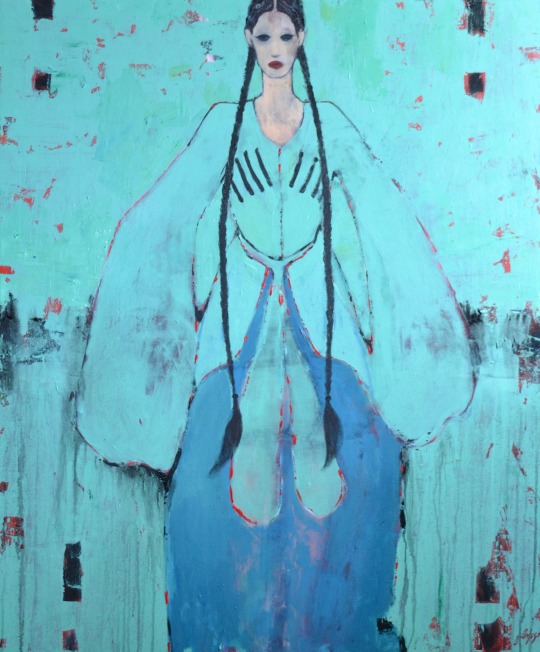
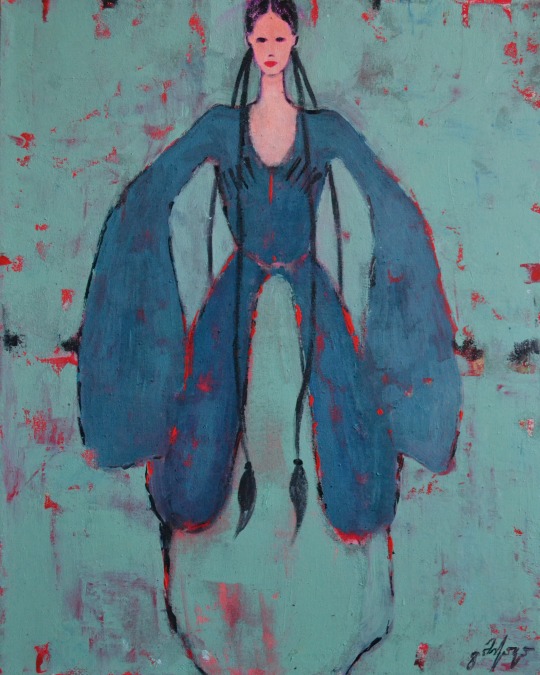
Khorumi (ხორუმი
The dance was originally performed by only a few men. However, over time it has grown. In today’s version of Khorumi, 30–40 dancers can participate, as long as the number is odd. The dance has four parts: a search for a campsite, the reconnoiter of the enemy camp, the fight, and the victory and its celebration. It is strong and simple but distinctive movements and the exactness of lines create a sense of awe on stage.
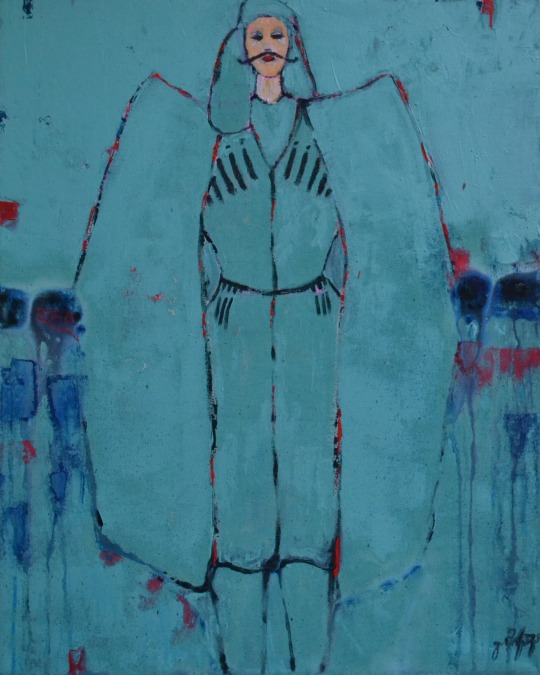
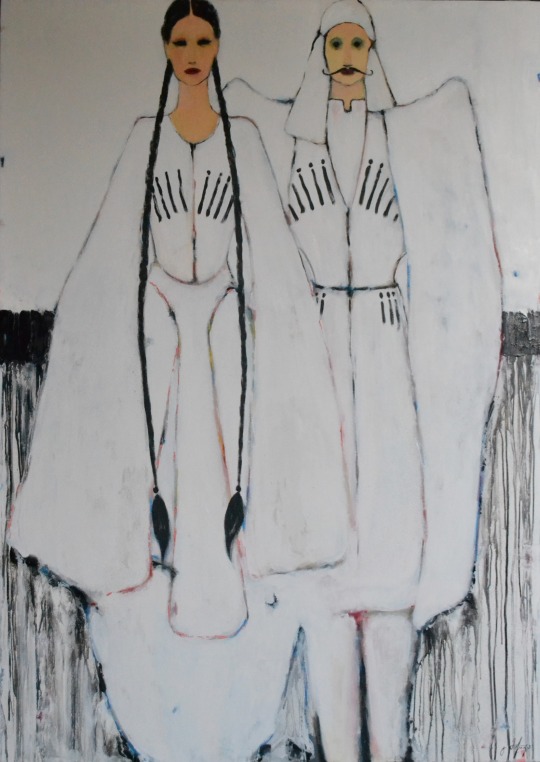
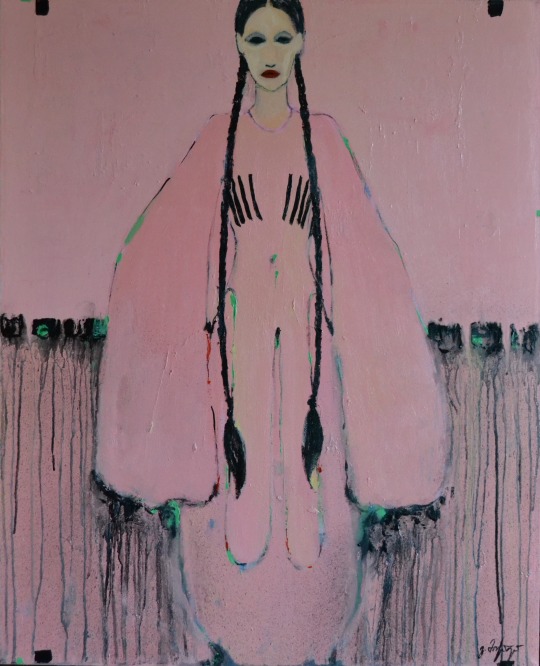
The dance incorporates the themes of search war, and the celebration of victory as well as the courage and glory of Georgian soldiers. Khorumi is traditionally accompanied by instruments and is not accompanied by clapping. Drum (doli) and the bagpipe (chiboni) are two key instruments to accompany Khorumi. Another unique element of Khorumi is that it has a specific rhythm, based on five beat meter (3+2).
Acharuli (აჭარული)
Acharuli also originated in Acharuli, which is where it gets its name. Acharuli is distinguished from other dances with its colorful costumes and the playful mood that simple but definite movements of both men and women create on stage. The dance is characterized with graceful, soft, and playful flirtation between the males and females. Unlike Kartuli, the relationship between men and women in this dance is more informal and lighthearted.
Partsa (ფარცა)
Partsa originated in Guria and is characterized by its fast pace, rhythm, festive mood, and colorfulness. Partsa mesmerizes the audience with not only speed and gracefulness, but also with “live towers.”
Kazbeguri (ყაზბეგური)
Kazbeguri originated in the Kazbegi Municipality in Caucasus Mountains of Georgia. The dance was created to portray relatively cold and rough atmosphere of the mountains, shown through the vigor and the strictness of the movements and foot stomping. This dance is performed mainly by men. Costumes are a long black coloured shirt, black trousers, a pair of black boots, and black headgear. Musical instruments include bagpipes, a panduri, a changi, and drums.[3]
Khanjluri (ხანჯლური)
Khanjluri is based on the idea of competition. Khanjluri is one of those dances. In this dance, shepherds, dressed in red chokhas (traditional men’s wear) compete with each other in the usage of daggers and in performing complicated movements. One performer replaces another, and the courage and skill overflow on stage. Since Khanjluri involves daggers and knives, it requires tremendous skill and practice on the part of the performers.
Khevsuruli (ხევსურული)
This mountain dance unites love, courage, respect for women, toughness, competition, skill, beauty, and colorfulness into one performance. The dance starts out with a flirting couple. Unexpectedly, another young man appears, also seeking the hand of the woman. Vigorous fighting between the two men and their supporters ensues. The quarrel is stopped temporarily by the woman’s veil. Traditionally, when a woman throws her head veil between two men, all disagreements and fighting halts. However, as soon as the woman leaves the scene, the fighting continues. The young men from both sides attack each other with swords and shields. On some occasions, one man has to fight off 3 attackers. At the end, a woman (or women) comes in and stops the fighting with her veil once again. However, the finale of the dance is “open” –meaning that the audience does not know the outcome of the fighting. Khevsuruli is very technical and requires intense practice and utmost skill in order to perform the dance without hurting anyone.
Mtiuluri (მთიულური)
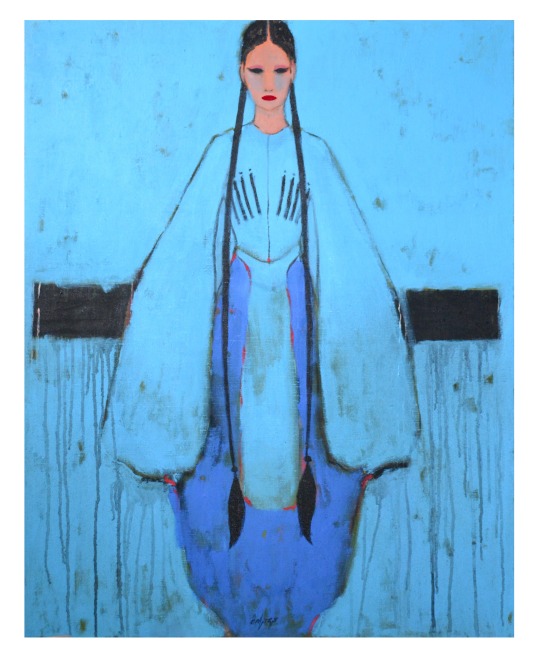
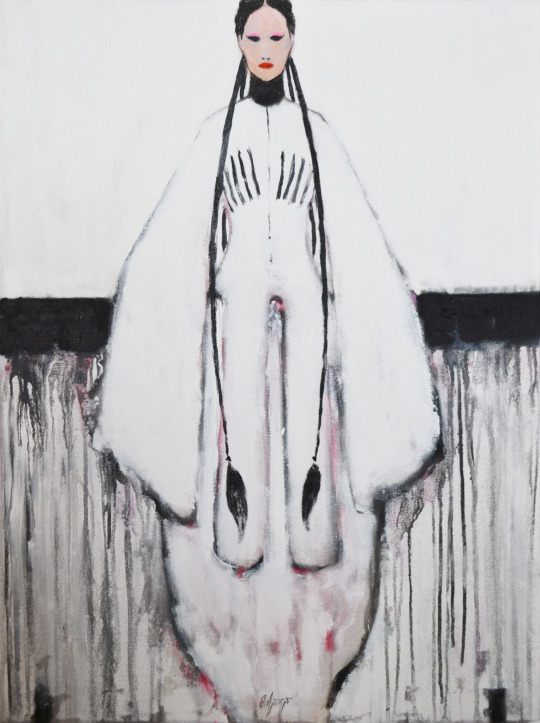

Mtiuluri is also a mountain dance. Similar to Khevsuruli, Mtiuluri is also based on competition. However, in this dance, the competition is mainly between two groups of young men and is a celebration of skill and art. At first, groups compete in performing complicated movements. Then, the girl’s dance, which is followed by an individual dancer’s performance of amazing “tricks” on their knees and toes. At the end, everyone dances a beautiful finale. This dance is reminiscent of a festival in the mountains.
Simdi and Khonga
Ossetian folk dances. The costumes in both dances are distinguished with long sleeves. The headwear of both the women and the men are exceptionally high. However, in Khonga or Invitation Dance (Ossetian Wedding Dance), men dance on demi-pointe, entirely on the balls of their feet. Khonga is performed by a few dancers and is characterized by the grace and softness of the movements. Simdi is danced by many couples. The beauty of Simdi is in the strict graphic outline of the dance, the contrast between black and white costumes, the softness of movements, and the strictness of line formations.
Kintouri (კინტოური) and Shalakho
Kintouri portrays the city life in old Tbilisi. The dance takes its name after “Kintos” who were small merchants in Tbilisi. They wore black outfits with baggy pants and usually carried their goods on their heads around the city. When a customer chose goods, a kinto would take the silk shawl hanging from his silver belt and wrap the fruits and vegetables in them to weigh. Kintos were known to be cunning, swift and informal. Such characteristics of Kinto are well shown in Kintouri. The dance is light natured.[4]
Samaia (სამაია)
Samaia is performed by 3 women and, originally, was considered to be a Paganism dance. However, today’s Samaia is a representation of Tamar of Georgia, who reigned in 12th-13th centuries and was the first empress of Georgia. There are only 4 frescos that keep the much-revered image of Empress Tamar. Simon Virsaladze based the costumes of Samaia on the Empress’s clothing on those frescos. In addition, the trinity idea in the dance represents Tamar of Georgia as a young princess, a wise mother and the powerful empress. All these three images are united in one harmonious picture. The simple but soft and graceful movements create an atmosphere of beauty, glory and power that surrounded the Empress’s reign.[5]
Jeirani (ჯეირანი)
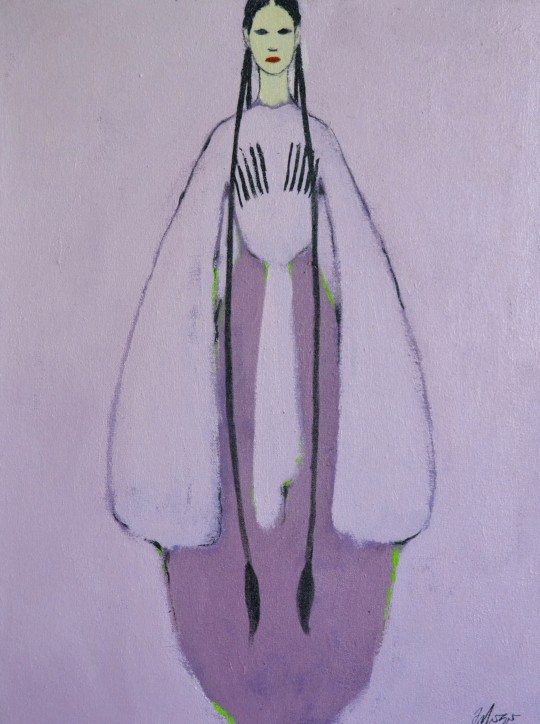
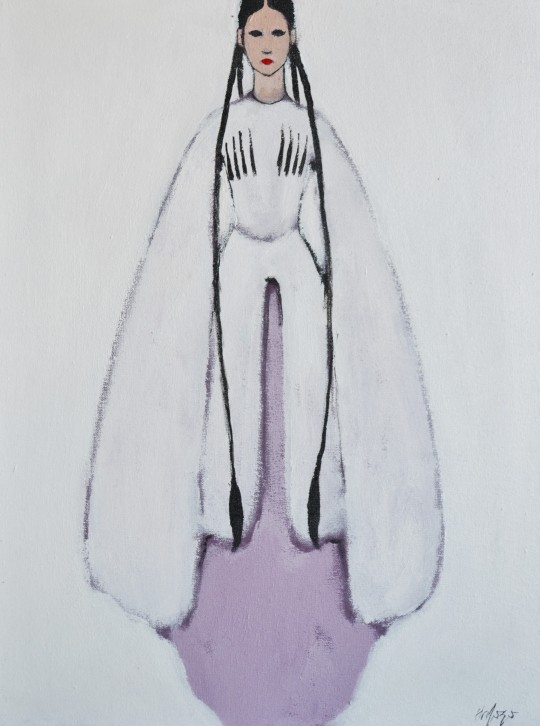
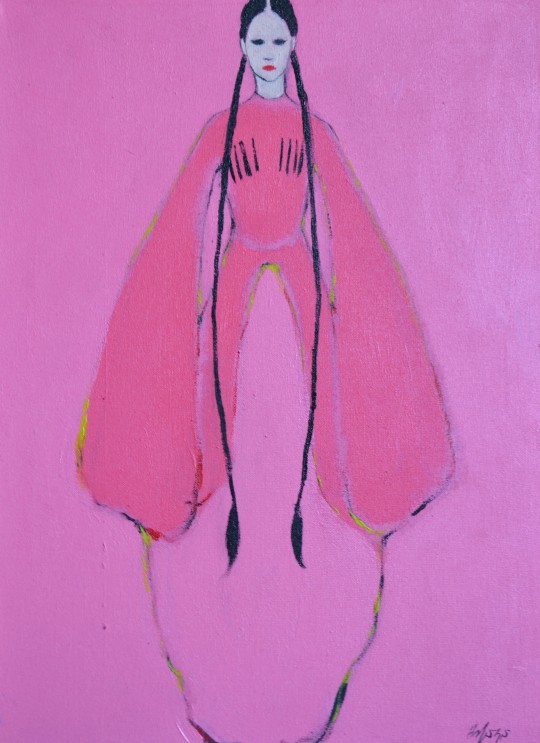
The word “jeirani” means gazelle. This dance tells the story of the hunt. It was choreographed by Nino Ramishvili for the Georgian National Ballet. The dance incorporates classical ballet movements and a hunting scene.[6]
Karachokheli (ყარაჩოხელი)
Karachokheli were the ordinary craftsman of Georgia. They typically wore black chokha (traditional men’s wear). They were known for hard work yet a carefree life, as well as a love of Georgian wine and beautiful women, all of which are well represented in the dance.
Davluri (დავლური)
Davluri is also a city dance, but unlike Kintouri and Karachokheli, it portrays the city aristocracy. The dance is similar to Kartuli. However, the movements in Davluri are less complicated and the male/female relationship is less formal. The dance is performed by many couples and with the music and colorful costumes, paints a picture of an aristocratic feast on stage.[7]
Mkhedruli


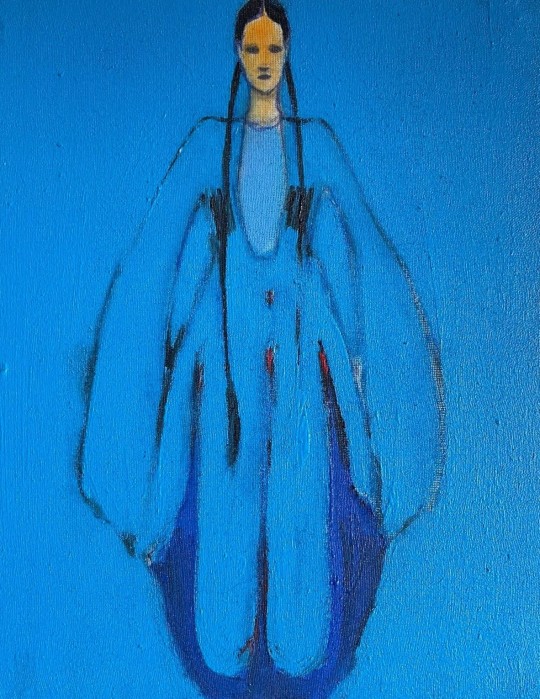
The word “Mkhedari” means cavalryman. The dance begins in a raging tempo, becoming more and more violent. The legs of the cavalryman imitate the fast movements of the horse, while their body and arm movements impersonate the battle with enemy.
Parikaoba (ფარიკაობა)



A warrior dance from Khevsureti in northeast Georgia. A girl enters, looking for her beloved. He appears only to encounter others, precipitating an energetic battle with sword and shield. When the girl throws down her headdress, the men must stop according to tradition, only to renew their battle soon after.[8]
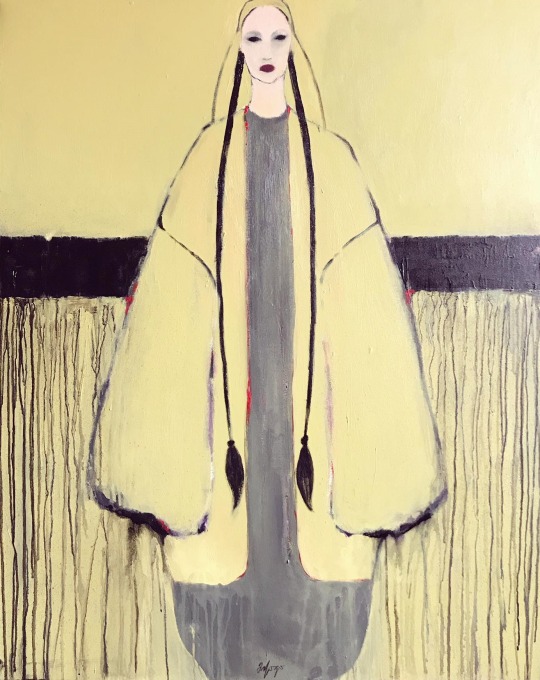
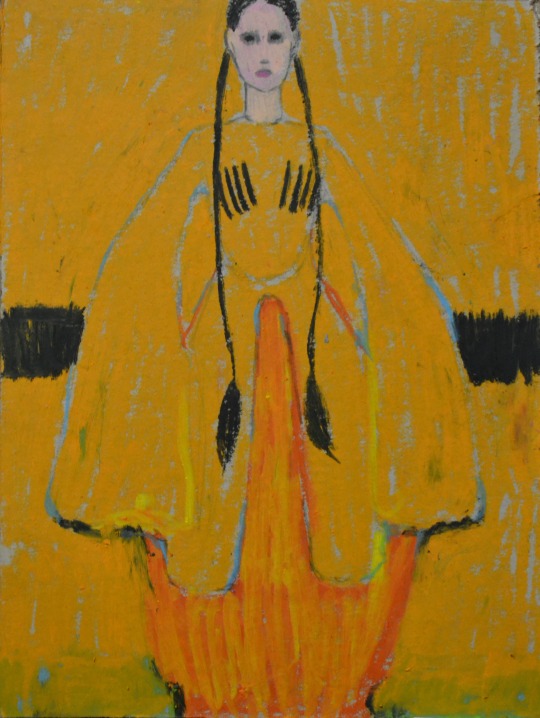
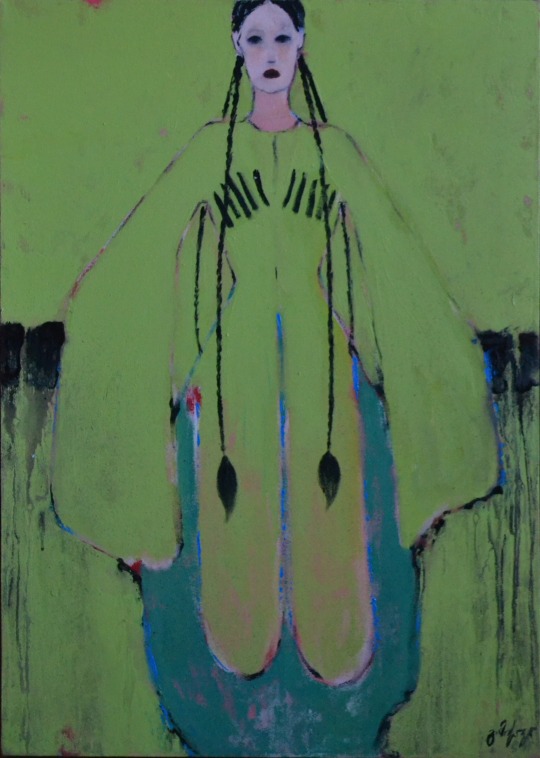
4 notes
·
View notes
Note
Where are you from? And what is your few thing about your country/city/town?
Heyy!! I'm from Georgia
Few thing that Georgia is known for is it's traditional Food and Dance , also it has very unique and places u can visit . Georgian people are known for their hospitality towards foreigners (except maybe towards Russians cuz yk yk ;))
11 notes
·
View notes
Text
And Then We Danced (2019)
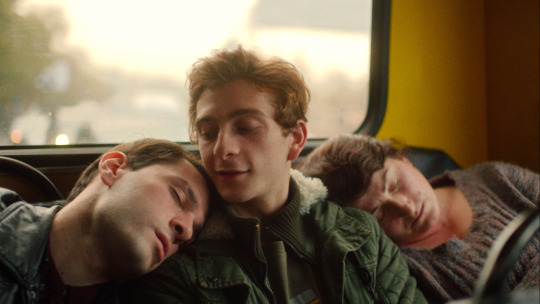
“You know, Georgian dance is based on masculinity. There is no room for weakness.”
Levan Akin’s And Then We Danced intermingles with the role of a certain perceived physical strength associated with traditional masculinity that men must maintain in order to retain their masculinity. This theme lends itself closely to this particular association in traditional Georgian dance and our main character, Merab, as he attempts to win a lead role at his dance company.
Merab is constantly chastised for “not being strong enough” for the role that his dance requires and while his merit as a dancer is called into question, so is his sexuality. Merab’s journey along the path of discovery and acceptance of his own sexuality is paralleled with his journey as a dancer. He thinks he is one thing and is confident in that until a point, he thinks he fails at something, then comes back with a new flavor of radical self-acceptance for the better.
In a similar vein, our reading this week explored the role that traditional masculinity has in American ballet and functions similarly in comparison to And Then We Danced. Both Traditional Georgian dance and American Ballet tend to wear a cloak of “traditional masculinity” that they assign to any male dancers who participate in the sport. However, with the physicality that dance requires comes a closeness, intimacy, and softness in order to maintain good performance. It is in this way that same-sex relationships in dance tend to seem so intimate, partners must understand one another and, often, be physically close with one another to achieve peak physical performance. It is in this way that we can apply the ideas of Jennifer L. Campbell, “ components worked together in a way that shrewdly merged conventional masculinity and queerness shrouded in a cloak of discretion,“ to the narrative of And Then We Danced.
7 notes
·
View notes
Text
Ode to the maternity mourning dress at the RAMM.
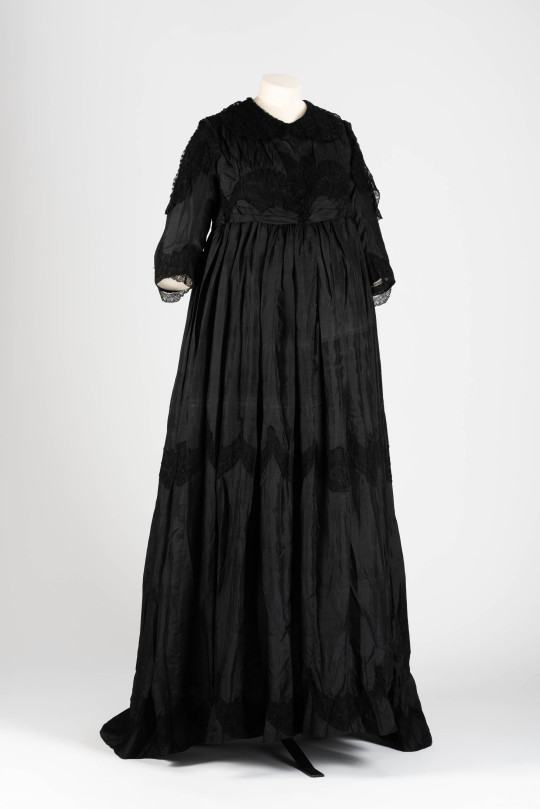


Let Love clasp Grief lest both be drown'd,
Let darkness keep her raven gloss:
Ah, sweeter to be drunk with loss,
To dance with death, to beat the ground,
Than that the victor Hours should scorn
The long result of love, and boast,
`Behold the man that loved and lost,
But all he was is overworn.'
– Lord Alfred Tennyson - In Memoriam A.H.H
Why do I obsess and perplex?
O’ Maternity gown encased in Perspex.
Are you clad in down from Ravens and Crows?
Thousands have flocked and pondered your perpetual pose.
Exhibition never-ending, a homage to piety.
Melancholic elegant product of propriety
Delighted by daydreams, enticed by your mystery.
Inferring from prior learning of culture and history
A scattered past and a displaced origin story,
that starts with silks from the Bombyx Mori.
Sailed across the empire, which the sun never sets.
This is the most conspicuous consumption ever gets.
Dyeing was a privilege proposed to the rich.
Pride steeps in your fibres, sorrow in every stitch.
You are gorge, baby. Proper.
Made-to-measure.
Forster’s bundle joyously pinked and pricked.
You are novel, handsome, stylish, hand-picked.
Deep Mourning sickness for one hundred-plus years.
You are a bathetic and British barrage of tears.
Pathetic and Prudish. Grieving maiden, mother, and crone.
I see birth and life and death, and none stand alone.
You are more than just a dress; you are a relic of the past,
While the fabrics of culture shift you ever last.
Zoey Feist - Spring 2023
Annotations
Odes: - A formal, ceremonious lyric poem that addresses and often celebrates a person, place, thing, or idea. Most odes in contemporary poetry are irregular odes that take liberties with the form.
RAMM -Royal Albert Memorial Museum – Exeter
Epigraph - In Memoriam A.H.H.” (1850) narrative elegy in 2,916 lines. Tennyson believes it is better to keep the pain of grief fresh in honour of the deceased.
Rhyming Couplets - Traditional for love poetry/sonnets - reinforces devotional tone.
Stanza One:
The vocative “O " invokes something or someone. Invocations call upon deities and spirits for aid, protection, inspiration, and allusion to the religious sentiment of the dress.
Ravens and crows provoke funeral imagery. Feathers became a fashion and social status symbol in the Georgian Era. "The Ladies, the Ladies, have, however, so stripped us of birds for their bonnets " Ornithologist - John Gould, in 1865, blamed his inability to supply a bird exhibit at a museum on women.
Propriety: the state or quality of conforming to conventionally accepted standards of behaviour or morals. Social Propriety pertaining to death and mourning was still strict in this era. Product has two meanings here as the result of propriety and is also a manufactured item.
Stanza Two:
Scattered - occurring or found at intervals or various locations rather than all together. Displaced - take over the place, position, or role of (someone or something) - implies/reminds of British colonisation.
Bombyx Mori - the Latin name for the Silkworm. Mostly found in India. India was part of the British Empire and called The British Raj -or ' The West Indies'. The East India Trading Company would have brought the silk back to England. Silk was a traditional fabric used for mourning clothes.
The saying “The Empire on which the sun never sets” was an expression used to explain the vastness of the British Empire between the 18th and 20th centuries.
Conspicuous, obvious, noticeable, or attracting attention, often in an undesired way. Conspicuous Consumption - Conspicuous consumption is the purchase of goods or services to display one's wealth.
Stanza Three:
Pun: Dyeing – Dying. Funerals were often expensive, grandiose, and public, reserved for the middle and upper classes. Although mass production of dull black fabrics was easier during the industrial revolution, brand-new and bespoke garments were only affordable to the middle and upper classes.
Puns: Tailoring Jargon: Gorge- The depth of the neck. Baby- A stuffed cloth pad on which a tailor works his/her cloth. Made-to-measure - made specially to fit a particular person, or room or purpose. Paired with the word proper (suitable/appropriate). Pinked - Made with care and skill. Frederick Forster was the leading retailer of mourning attire. ‘Forster’s bundle joyously’ is a pun made from the term "bundle of joy" and a tailor’s bundle, in which all the components of a garment are bundled together. Referencing infants and pregnancy. Frederick Forster described his range of attire as “novel, handsome and stylish.” Hand Picked - clothing rack at a ‘draper’ The rise of capitalism during the industrial revolution meant a growing economy. The government encouraged the middle and upper classes to grow the empire's economy.
Stanza Four:
Pun: Deep Mourning – Morning Sickness. During ‘deep mourning’, a widow should wear a deep mourning dress ‘, widow's weeds’ for a year. Black silk or crepe was the conventional material used in mourning garments. In the last nine months of this first mourning year, the amount of crepe worn would gradually reduce. Which is also a full-term pregnancy. This maternity mourning dress has been stuck in this phase/term since being manufactured in 1912.
Bathetic and British barrage of tears: Anticlimactic symbol of British domination. Barrage - Two Meanings 1. a concentrated artillery bombardment over a wide area. Military imagery and imagery of widespread empire through force. Shelling of tears - however, was not a technique used until WW1 1915 – making this an inaccurate reference. 2. An artificial barrier across a river or estuary to prevent flooding, aid irrigation or navigation, or generate electricity by tidal power, barrages were invented in the 1800s. Reminds of the Industrial Revolution
Pathetic and Prudish - Sad and Proud. Maiden, Mother, Crone. The Triple Goddess is the tri-unity of three distinct aspects of womanhood/ three figures united in one being. Georgian women occupied the domestic sphere, had minimal societal roles and had limited opportunities. These are three roles she has in the domestic sphere. Virgin or Child. Wife and Mother, Crone or Spinster.
2 notes
·
View notes